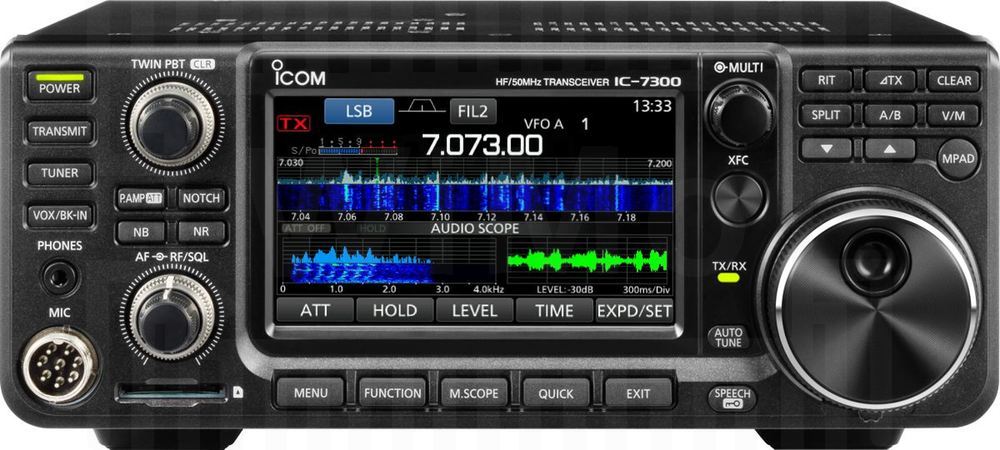
A number of members have the iCOM IC7300 transceiver as their primary base transceiver. One member has an iCOM IC705 which has a similar user interface.
This workshop provided an opportunity for members to share their tips and tricks in using the IC7300. Even those who didn’t own this rig, were able to learn more about iCOM’s user interface and its strengths and weaknesses. While the iCOM is straight forward to use, there are a number of traps that people discover as they go along. For example, if you have been using the rig on 10m FM (or similar) you may have adjusted the squelch control (which is shared with the RF volume control). When you switch back to 7.055 MHz for the Branch 50 NZART net on Sunday, you may find you can’t hear anything. Not even any band noise. You panic! What has gone wrong with my $2000 appliance? You may find the same result by turning both the RF Gain up full…. The answer is simple, always check the RF gain setting if you can’t hear anything. It needs to be set at about 11 o’clock if you want to hear something!
Presenters included Malcolm ZL2UDF, Frank ZL2TTS, John ZL2XJ, Bernard ZL2BD, and Mike ZL1AXG.
The presenters covered a range of topics including, pre-operating checks, simple controls (Gain controls, band switching, changing frequency on the waterfall display, using the attenuators and pre-amps, etc). They also delved a bit deeper into less frequently used features, including interfacing the rig to a computer, how to use the accessory outputs (e.g. to provide band-switching on a linear amplifier) and how to build a small interface to switch between pre-recorded voice messages for contest calling, and an explanation of various display modes (e.g. seeing RX and TX audio spectrum graphs on the display).
The shed meeting was held at John ZL2XJ’s QTH . A follow up session may be organised to cover things that we did not have time to cover – such as saving settings to the SD-card, software options for digital modes, and using the networking features of WFview software for remote operation.
